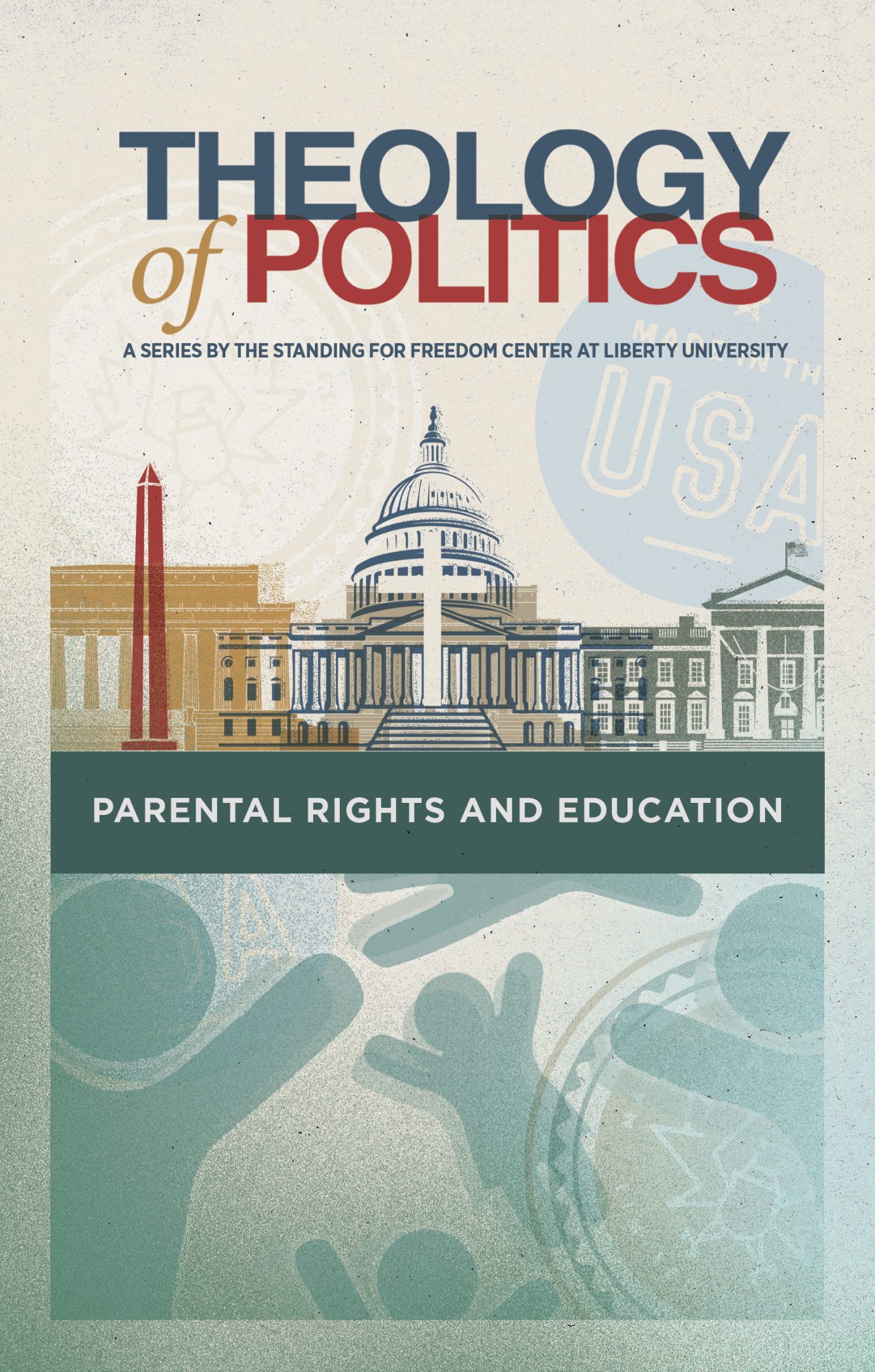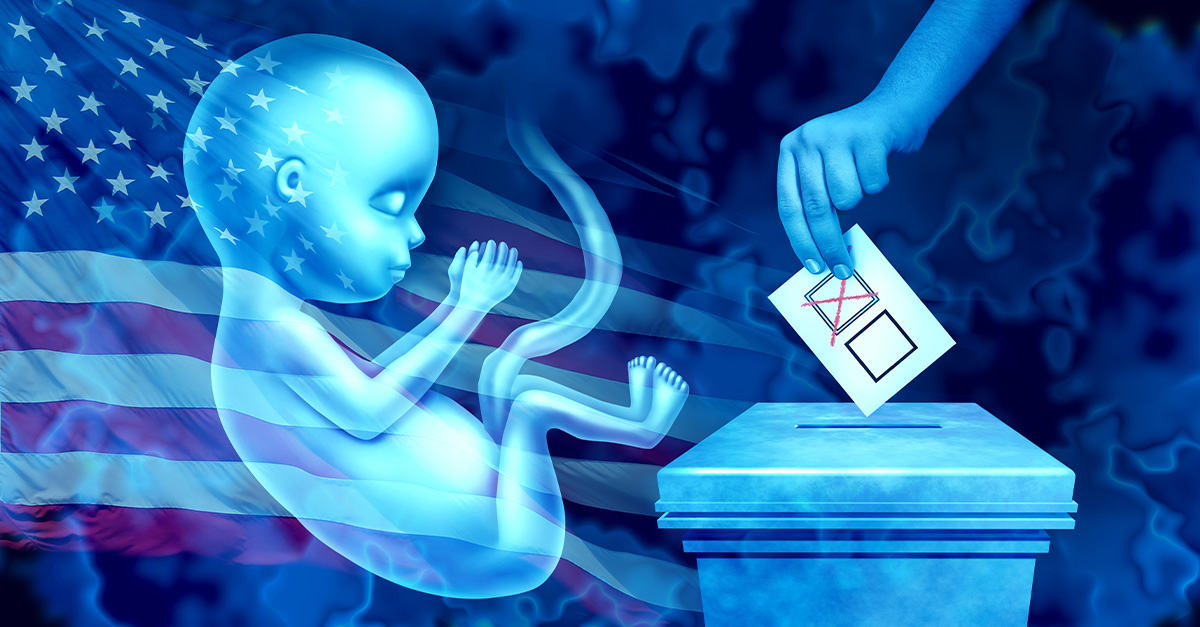


Get a free copy of Parental Rights & Education when you subscribe to our newsletter!

With abortion on the ballot in ten states, the pro-life movement finally got its first three wins since Roe v. Wade was overturned — but it also suffered seven devastating defeats.
When the Supreme Court overturned Roe v. Wade in June 2022 with its decision in Dobbs v. Jackson Women’s Health, the issue of abortion moved to the states and the pro-life movement believed that duly elected state legislatures could finally exercise their constitutional authority to significantly restrict or even ban the large majority of elective abortion. And many states have done just that.
This year, another 10 state ballot measures were put before the voters, but the pro-life movement finally saw its first ballot victories since the overturning of Roe v. Wade. Unfortunately, the final outcome proved a mixed bag, and the wins don’t even come close to offsetting the reality that pro-lifers also experienced major setbacks in some of the most conservative and pro-life states in the nation. Here’s how the election shaped up:
The headline state was Florida, in which enough votes answering “No” to Amendment 4 defeated the measure, marking the very first time a post-Dobbs effort to codify the right to an abortion in a state constitution had failed. The battle over the ballot measure had raged for months.
Amendment 4 stated, “No law shall prohibit, penalize, delay, or restrict abortion before viability or when necessary to protect the patient’s health, as determined by the patient’s healthcare provider.”
If more than 60 percent of voters said yes, the law would have overturned Florida’s 15-week abortion ban, but critics said it would have done much more than that due to the clause about a patient’s health. By granting a doctor the right to determine if an abortion was necessary to protect a patient’s health, doctors or other healthcare providers would have likely had the ability to legally perform an abortion for non-emergency reasons, such as the mental health of the mother. That would have effectively allowed abortion to be legal through all nine months of pregnancy and up until the moment before birth.
Fortunately, only 57 percent of Florida voters voted to adopt the amendment, which meant it failed. As noted previously, in the Sunshine State, a supermajority of 60 percent is necessary to amend the Florida Constitution; for most states, passage only takes 50 percent plus 1 vote.
Opponents of the amendment celebrated, noting that the victory came despite a massive funding disadvantage.
As Lila Rose, founder and president of LiveAction, explained on X,
“Pro-abortion groups spent $120 MILLION to enshrine Amendment 4 and abortion on babies through all nine months into Florida’s constitution. They outspent pro-life 8:1 but they still FAILED. Abortion is a human rights violation and Florida supports LIFE!”
The pro-life cause won twice in Nebraska. That’s because the state had put two competing ballot amendments on the ballot.
Ballot Initiative 434 asked if voters wanted to keep in place the state’s ban on elective abortions in the second and third trimester, and 55.32 percent of voters said yes. Meanwhile, Ballot Initiative 439 asked voters if they wanted to create a constitutional right to abortion up to viability and beyond for reasons of the health of the mother. The effort was defeated, with 51.45 percent voting no.
As a result, Nebraska’s legislature now has the freedom to keep its 12-week abortion ban in place or even change it in the future.
South Dakota voters overwhelmingly rejected the pro-abortion cause.
Amendment G would have stopped the state legislature from putting any restrictions on abortion during the first trimester, only allowing it to regulate abortion in the second and third trimesters. Like many ballot amendments, however, the “health” of the mother rather than the life of the mother would have provided an exception, likely meaning a mother’s mental health could have been used as a legal reason to perform an abortion in the second or third trimester.
However, 59 percent of voters voted no on the amendment, which means that the state can maintain its current ban on abortion unless the life of the mother is at stake.
SBA Pro-Life America President Marjorie Dannenfelser stated,
“The demise of pro-abortion Amendment G is an enormous victory for life. When we wake up tomorrow, unborn children will still be protected in the great state of South Dakota…. Precious boys and girls will live as a result of this vote, and the state will be immensely better off as they grow to fulfill their God-given purposes. Voters have rejected placing late-term abortion in the constitution in favor of South Dakota’s life at conception law that protects the lives of women and unborn babies at every point.”
Tragically for babies in Arizona, Colorado, Maryland, Missouri, Montana, Nevada, and New York, the pro-life movement experienced large defeats. In all of those states, amending the constitution only requires a majority vote.
The successful pro-abortion ballot measures in Arizona and Missouri were particularly devastating, as they both completely undo current pro-life state laws that had been passed by the legislature and were adjudicated by the courts.
With 94 percent of precincts reporting in Arizona, 61 percent of voters chose to add the right to an abortion up to viability into the state constitution, eliminating the state’s ban on elective abortions after 15 weeks’ gestation.
As a result, Arizona’s legislature will no longer be able to pass any restrictions on abortion before viability, which is typically considered to be 24 weeks. The ballot result effectively codifies the Roe standard into state law.
In Missouri, 51.6 percent of voters approved Amendment 3, which creates the constitutional right to an abortion. The amendment was so broadly worded that it will likely prohibit the legislature from making any functioning restrictions on abortion; some critics believe that the ballot measure could also prohibit the legislature from restricting gender transitions in minors.
The amendment stated, “the government shall not deny or infringe upon a person’s fundamental right to reproductive freedom, which is the right to make and carry out decisions about all matters relating to reproductive health care, including but not limited to prenatal care, childbirth, postpartum care, birth control, abortion care, miscarriage care, and respectful birthing conditions.”
While the amendment’s proponents claimed that it will allow the legislature to limit abortion after viability, the amendment explicitly denies the legislature the ability to “restrict an abortion that in the good faith judgment of the healthcare professional is needed to protect the life or physical or mental health of the pregnant person.” As a result, all a doctor would need to do is claim that giving birth would cause the mother stress and that would be enough to allow her to legally abort her child.
Prior to Election Day, Brian Westbrook from Coalition Life stated that, if passed, the ballot proposal would result in “the most extreme abortion law that would be on the books in the entire nation.”
Missouri currently has a ban on abortion, with the exception of medical emergencies, and the passage of the amendment doesn’t instantly overturn it. However a lawsuit has already been filed, and courts will likely overturn the state law as a result of the new amendment.
Meanwhile, Colorado, Maryland, and Montana all voted to create a constitutional right to an abortion, although each state already allowed abortion up until viability.
More than 61 percent of New Yorkers voted to adopt an Equal Rights Amendment that prohibits a person’s rights from being limited based on “ethnicity, national origin, age, and disability” or “sex, including sexual orientation, gender identity, gender expression, pregnancy, pregnancy outcomes, and reproductive healthcare and autonomy.”
Critics claim it will remove parental consent requirements for minors who want to have a gender transition or abortion.

These ballot amendments show that the pro-life community must do a better job in educating voters about these amendments. Chief among our tasks is to dispel the lie that scores of women are dying because of limitations on abortion.
Setting aside the fact that an abortion is not the same process as care for an ectopic pregnancy or a miscarriage, every state in the country allows for an abortion if the life of the mother is at stake. What’s more, nearly every state allows for abortion if the health of the mother is at risk.
Every state allows a woman to get care for an ectopic pregnancy or miscarriage. Every single one.
Those who say that abortion bans stop women from getting the medical help they need are either lying or woefully confused.
The pro-abortion movement works every day to convince Americans that abortions are medically necessary and that abortion bans are somehow cruel. The pro-life movement must counter that with the reality of abortion. That little girls and little boys are torn apart in the womb and then removed, piece by piece, during a surgical abortion. That women who get a chemical abortion are sent home with pills that send them into labor and force them to give birth to a dead baby without any medical support.
It is distressing to know that these ballot measures will now greenlight more death and more trauma, but that fact should also rouse pro-lifers to work even harder to educate Americans and help them understand what actually takes place during an abortion. It’s not merciful, it’s not a human right, and it’s not healthcare. Because when Americans see for themselves and truly understand how cruel and barbaric it is to kill a living, growing human being — no matter how small — they are horrified and almost always change their belief system.
If the pro-life movement can do that, one person at a time, they’ll be able to defeat future ballot measures — and also use the electoral process to undo those pro-abortion amendments that were passed after the Dobbs decision.
If you like this article and other content that helps you apply a biblical worldview to today’s politics and culture, consider making a donation here.
.

Notifications